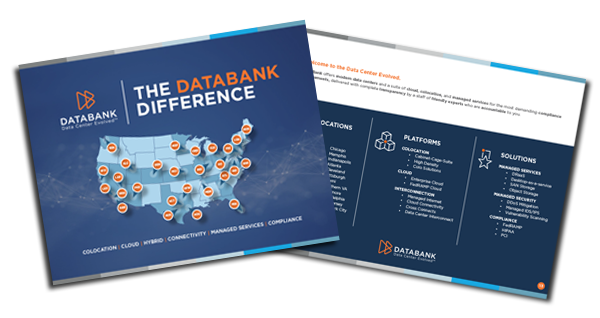Instead of choosing between the public cloud, the private cloud, and an on-premises data center, businesses are increasingly choosing to combine all three technologies. Done properly, this can give them the best of all worlds. With that in mind, here is a quick guide to hybrid cloud solutions and data center integration.
An overview of hybrid clouds and data centers
For clarity, a hybrid cloud is a cloud that includes both private cloud infrastructure and public cloud infrastructure. Private cloud infrastructure is cloud infrastructure that is for the exclusive use of one entity. Public cloud infrastructure is infrastructure that is owned and managed by a third party but made available for anyone to use.
Data centers are facilities that are used to host core IT infrastructure, particularly networking infrastructure. They are often used as physical bases for cloud infrastructure but they can serve other purposes.
Types of hybrid-cloud deployments
There are many different ways that hybrid clouds can be implemented. Here are four of the most popular options.
Cloud bursting: In this scenario, an organization’s private cloud extends into the public cloud during periods of increased demand, ensuring optimal performance and resource availability without overloading the private infrastructure.
Data backup and recovery: Hybrid cloud facilitates robust data backup and disaster recovery solutions by storing critical data and applications in both public and private environments, ensuring business continuity in the event of data loss or system failures.
Data synchronization: Hybrid cloud enables synchronized data access across multiple locations, ideal for geographically dispersed teams or branches.
Development and testing: Developers can leverage the public cloud for cost-effective testing and development environments while keeping sensitive data within the secure confines of the private cloud.
The common factor in all of these options is that they all leverage the strengths of each environment to give the best overall result. This is the key to making the most of the hybrid cloud.
Hybrid cloud architecture
The most basic form of hybrid cloud architecture is the distributed cloud. A more complex form of hybrid cloud architecture is the multicloud.
Distributed cloud
A distributed cloud model involves dispersing cloud services across diverse geographic locations, offering organizations greater proximity to end-users, and optimizing performance. The main benefit of using a distributed cloud is reduced latency. This leads to improved application responsiveness and enhanced user experiences.
Distributed clouds also tend to be highly reliable. They can maintain at least some level of service availability even in the face of localized disruptions. Using distributed clouds may also make it easier to comply with data security standards as data can be stored in the same region as the data subject.
On the minus side, network management is generally more complex than with a non-distributed cloud. Organizations also need to consider how they will ensure consistent service levels across different nodes in different locations.
Multicloud
A multi-cloud approach involves utilizing services from various public and private cloud providers. By strategically distributing workloads across different cloud environments, businesses can optimize performance, enhance redundancy, and mitigate risks.
Multi-clouds are highly flexible. Organizations have complete freedom to choose the most suitable services from different providers. In particular, organizations can choose the most cost-effective solution for each specific task.
That said, multicloud implementations tend to be very complex to manage as organizations work with multiple providers. Organizations therefore need to ensure that they have a robust governance framework.
On the technical side, organizations also need to consider how they will ensure seamless integration across diverse cloud ecosystems. In particular, they need to ensure consistent security protocols and efficient data management.
Advantages of integrating hybrid cloud with data centers
When implemented correctly, a hybrid cloud can offer scalability, flexibility, and agility without compromising on security. It can also be much more cost-effective than only using either a private cloud or a public cloud.
The practical benefits of hybrid clouds
Regardless of what type of hybrid cloud deployment a company uses, the guiding principle will generally be to use the public cloud to expand the reach of the private cloud. This expansion could be either vertical or horizontal.
An example of vertical expansion would be cloud bursting. In this approach, the public cloud is used to handle spikes in traffic. This ensures that users get the service they expect without the business having to overprovision the private cloud relative to their standard needs.
An example of horizontal expansion would be content delivery networks (CDNs). These allow resources to be hosted near the relevant user base. The main benefit of this is usually faster delivery. It can, however, also help with disaster recovery and business continuity.
The cost benefits of using a hybrid cloud
Setting up a private cloud typically requires some level of upfront investment and/or long-term commitment. Once a private cloud is in operation, however, its running costs can be much lower than the cost of using a public cloud. The opposite is true of the public cloud. It has little to no upfront costs but will generate ongoing costs for as long as it is used.
Implementing a hybrid cloud allows businesses to keep their core processing in-house and hence minimize their operational costs. At the same time, it allows them to access extra resources whenever they need them.
These extra resources may cost more than standard in-house processing. They are, however, more economical than equipping private clouds to meet peak demands and leaving this resource idle most of the time.
Best practices for hybrid cloud solutions and data center integration
Here are 7 key best practices for successful integrations.
Comprehensive infrastructure assessment: Thoroughly evaluate existing data center infrastructure to identify areas that can benefit from hybrid cloud integration. Determine their capabilities, limitations, and compatibility with cloud services.
Define clear objectives and use cases: Determine which workloads, applications, or data sets should migrate to the cloud and which should remain on-premises.
Choose the right providers: Select reputable hybrid cloud service providers aligned with your organization’s needs. Consider service offerings, pricing models, security features, and compliance certifications.
Develop robust data management and security strategies: Implement encryption, access controls, and data backup solutions to safeguard sensitive data and ensure compliance with all relevant programs.
Carefully plan network architecture and connectivity between the data center and the cloud: Address latency, bandwidth, and redundancy requirements for optimal performance and implement robust security measures.
Execute the integration methodically: Start with less critical workloads and progress to mission-critical ones. Rigorously test the integrated environment to identify and address compatibility, performance, or data synchronization issues.
Implement robust monitoring tools and practices: Track performance, security, and cost-effectiveness. Regularly optimize resource allocation and configurations based on data-driven insights.
Workload migration
The ability to move workloads seamlessly between on-premises and cloud environments enables organizations to adapt quickly to changing circumstances. In particular, it allows them to scale resources dynamically based on their needs. This in turn enables them to optimize their efficiency. Moreover, it facilitates the incorporation of innovative technologies and services available in the cloud, fostering agility and adaptability.
Best practices for workload migration
Here are three key best practices for workload migration.
Assessment and planning
Organizations must comprehensively evaluate their existing on-premises infrastructure, to identify applications and workloads that are suitable for migration to the cloud. To do this, they will need to analyze performance metrics, resource utilization, and dependencies.
After choosing the applications and workloads to be moved, organizations will need to develop a plan for the migration. This will set out the method to be used for the migration along with the measures for maintaining data security and compliance. It will also establish contingency measures in case of potential challenges.
Data replication and synchronization
By creating multiple copies of critical data across different locations, organizations ensure data availability even if one environment experiences failure. This redundancy enhances business continuity and minimizes the impact of potential disruptions.
Additionally, implementing synchronization strategies is vital for real-time data updates across various systems and clouds in a hybrid environment. Data synchronization mechanisms, such as real-time replication and integration platforms, play a crucial role in maintaining consistency.
Consistency models
It’s vital to select the appropriate consistency model for each data type, as it needs to align with specific application requirements and performance expectations.
Striking the right balance between immediate uniformity and system responsiveness is essential for optimizing the functionality and efficiency of hybrid cloud applications.
Strong consistency ensures that once a data update is completed, all subsequent accesses reflect that update instantly. It therefore provides a linear and straightforward approach to data management.
Eventual consistency allows for a more relaxed approach. This means that updates might not be immediately reflected across all nodes but will eventually converge to a consistent state.
Integration challenges and solutions
Here are three of the main integration challenges and their solutions.
Data security and compliance: Organizations must implement comprehensive measures such as encryption, access controls, and secure protocols to safeguard data integrity and confidentiality. They must also ensure that all environments comply with any relevant data security standards.
Interoperability issues: Efficient operations in a hybrid cloud environment heavily depend on the ability of different systems to interoperate without disruptions. Addressing interoperability challenges involves employing integration tools, standardized communication protocols, and strategic planning to create a cohesive ecosystem.
Scalability and flexibility: Hybrid cloud environments must offer seamless resource scaling. This means that the infrastructure must accommodate changing demands efficiently. Ways to achieve this include implementing automated scaling mechanisms, leveraging cloud management tools, and adopting a flexible architecture that facilitates adjustments.
Related Resources:
Interconnection Solutions for Hybrid Cloud Environments




